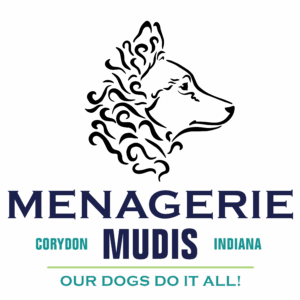The Mudi, also known as the Hungarian Mudi or Hungarian herding dog, has a rich history that dates back several centuries in Hungary. This breed was traditionally used for herding livestock, particularly sheep, and was valued for its intelligence, agility, and versatility. The Mudi is recognized for its distinctive curly or wavy coat and comes in various colors.
During the early 20th century, however, the breed faced near extinction during wartime invasions and as mechanization changed farming practices. Efforts to revive the Mudi began in the 1930s, driven by dedicated enthusiasts and breeders who recognized the breed’s unique qualities and historical significance. In 1971, the Mudi was officially recognized by the Hungarian Kennel Club, solidifying its place in the world of dog breeds. Today, the Mudi is appreciated not only for its herding abilities but also as a loyal companion and a participant in various dog sports.

Zille seeing sheep for her first time
We try to start every litter on ducks












Not every Mudi will have access to livestock or live in an environment where herding can be practiced—but that doesn’t mean their natural herding drive goes to waste. In fact, that instinct can fuel incredible success in a wide variety of dog sports!
Herding drive translates into focus, biddability, athleticism, and problem-solving, which are valuable traits in many canine activities. Here’s how herding instincts shine elsewhere:
- Agility – Quick reflexes, sharp turns, and reading a handler’s cues all mirror the skills needed to manage a flock.
- Obedience & Rally – A strong desire to please and focus on the handler are herding dog trademarks.
- Scent Work & Tracking – The same mental engagement and concentration needed to work livestock can be channeled into scent games and nosework.
- Dock Diving & FastCAT – Herding breeds are naturally athletic and fast, giving them an edge in high-speed, high-energy sports.
- Barn Hunt & Treibball – These give Mudis the chance to “work” in creative, drive-satisfying ways, even without traditional herding animals.
A herding drive is less about livestock and more about a Mudi’s drive to engage, think, and partner with their human. With the right outlet, these dogs thrive—even far from the farm.
